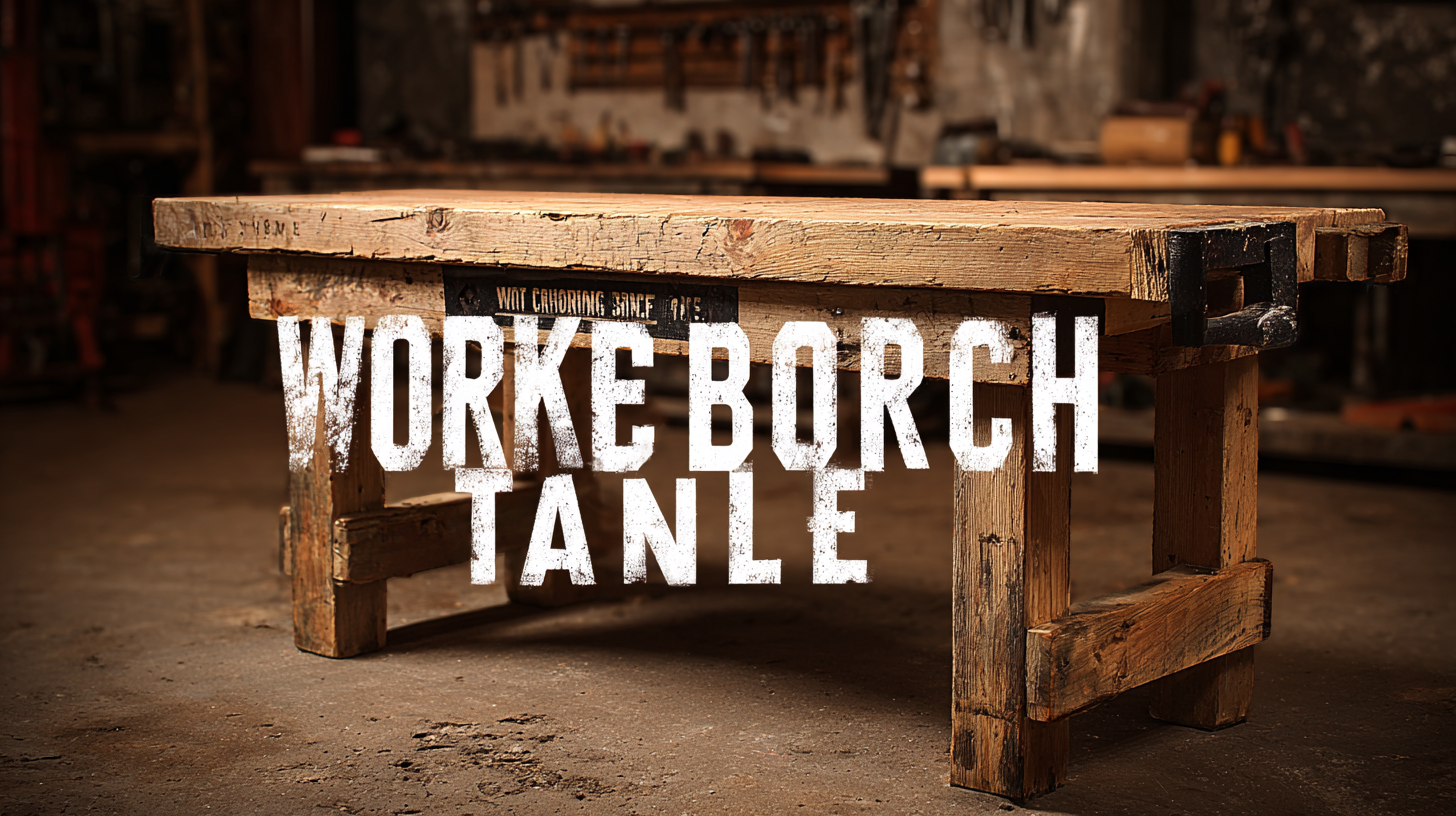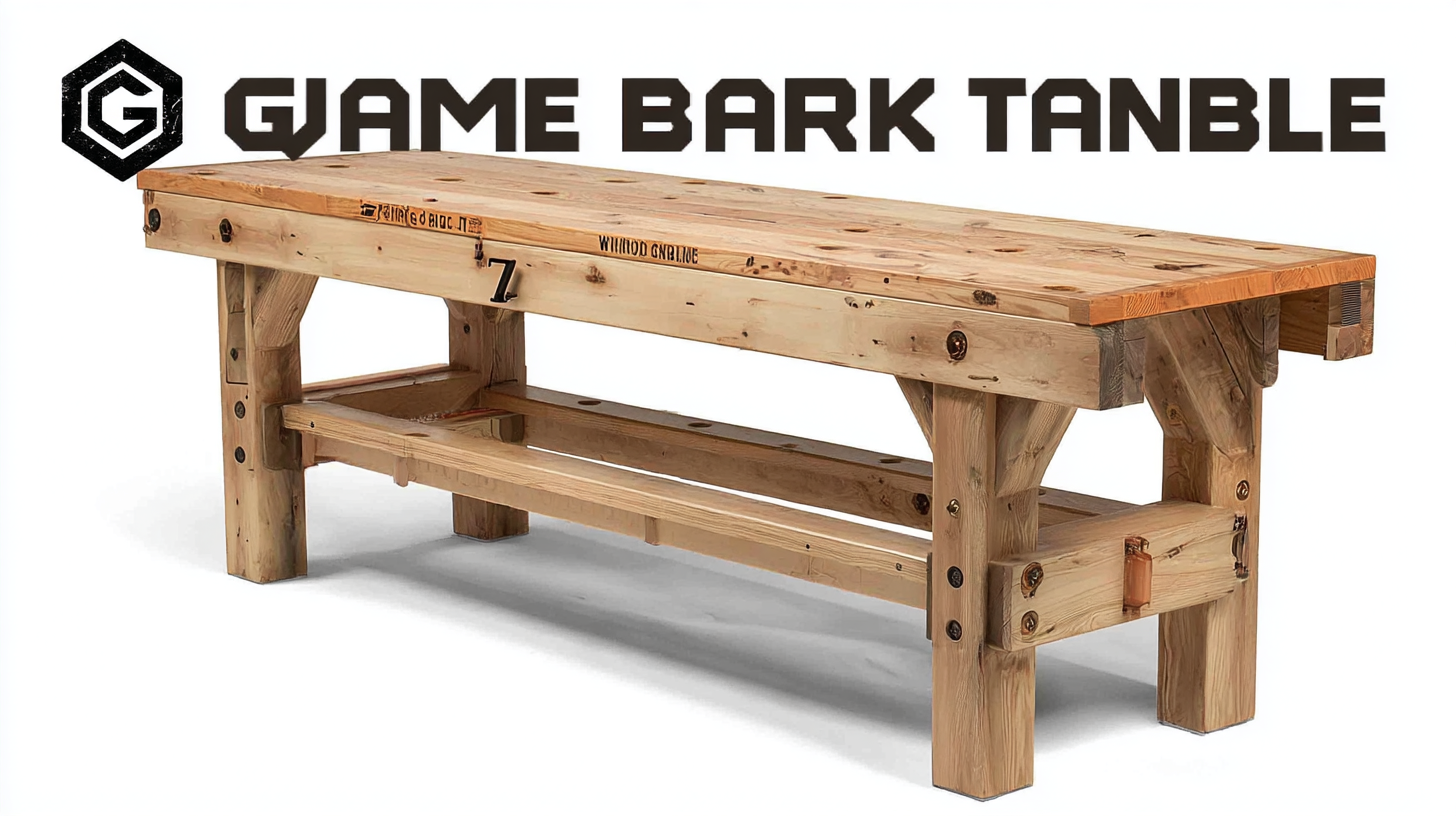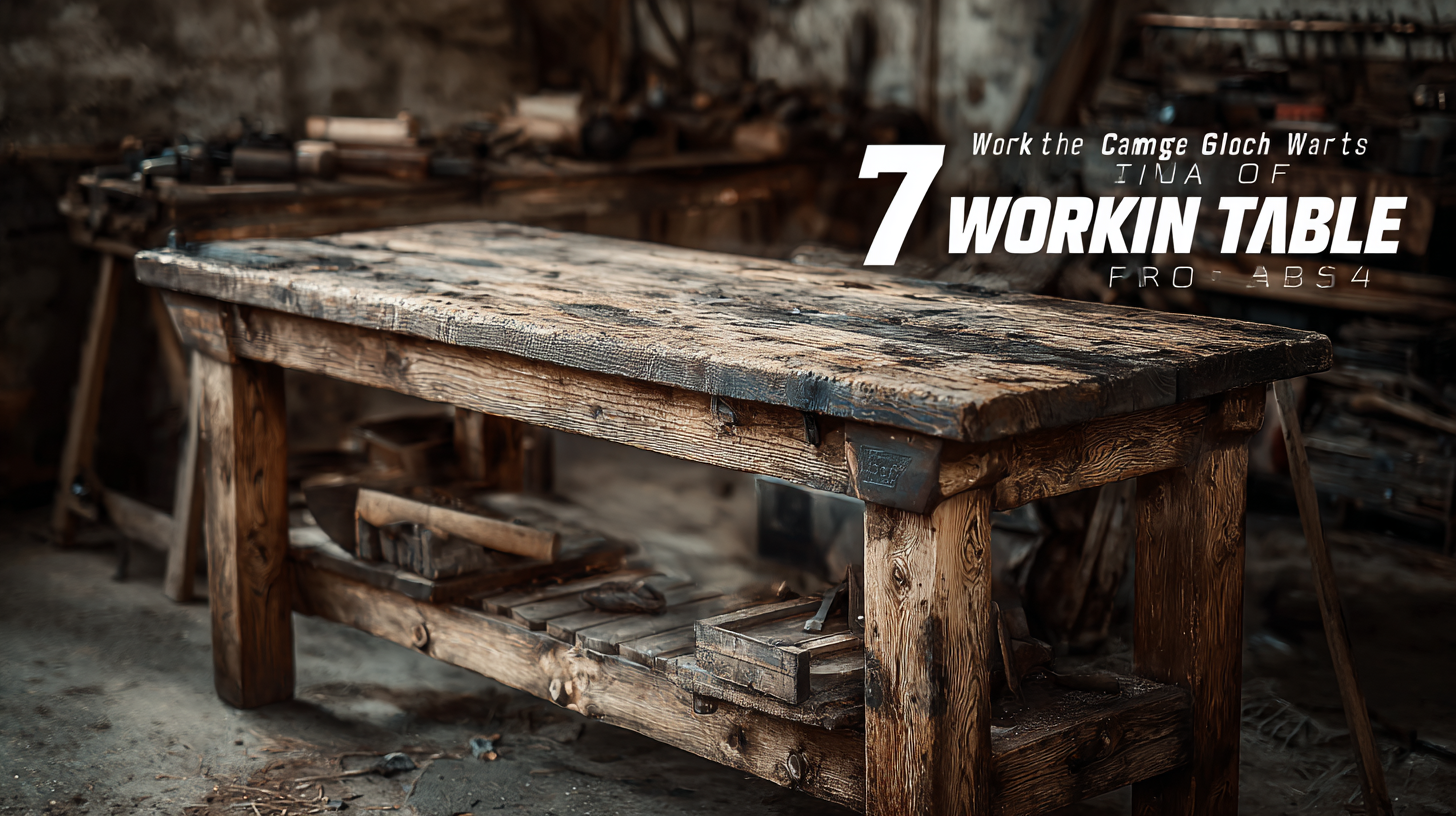7Game-Changing Tips for Choosing the Best Work Bench Table for Your Space
When it comes to creating an efficient workspace, the choice of a work bench table plays a pivotal role in enhancing productivity and functionality. According to a recent industry report by IBISWorld, the demand for ergonomic workstation solutions has surged by 12% over the past five years, reflecting a growing recognition of the importance of proper workspace design. A well-selected work bench table not only maximizes utility but also contributes significantly to worker comfort and performance. Furthermore, a study from the Occupational Safety and Health Administration (OSHA) emphasizes that appropriate workspace layouts can reduce the likelihood of injuries by up to 30%.

In light of these impactful statistics, our blog will provide you with seven game-changing tips to ensure you choose the best work bench table tailored to your specific needs and space requirements.
Identifying Your Workspace Needs: Understanding Size and Functionality
When choosing the best workbench table for your space, it's crucial to start by identifying your workspace needs. Understanding the size and functionality of the area where you plan to use the workbench will significantly influence your decision. Consider the dimensions of your workspace, including ceiling height, floor space, and any surrounding obstacles. A compact workbench may be ideal for smaller areas, while larger spaces can accommodate more extensive setups with added storage and tools.
Another important factor to consider is the functionality of the workbench. Think about the tasks you will perform and the tools you will need access to. If woodworking or heavy-duty projects are in your plans, a sturdy workbench with ample weight capacity is essential. Look for features such as adjustable height, built-in storage, and a durable surface to maximize efficiency. Remember, a well-chosen workbench can enhance your productivity and make your workspace much more enjoyable.
Tip: Before purchasing, create a list of essential tools and materials you will frequently use. This will help you select a workbench that best fits your specific needs and ensures easy accessibility for a smooth workflow.
Workspace Needs Assessment: Choosing the Right Work Bench Table
Material Matters: Choosing the Right Surface for Durability and Use
Choosing the right surface material for your workbench table is crucial for both durability and functionality. According to a report by the American National Standards Institute (ANSI), workbench surfaces endure various types of stress, including pressure, impacts, and exposure to chemicals. Selecting a durable material can significantly enhance the longevity of your workspace. For instance, high-density polyethylene (HDPE) is often recommended for its resistance to moisture and chemicals, making it ideal for workshops that handle various substances.
Another popular choice is butcher block surfaces, known for their sturdy construction and natural aesthetic. A survey conducted by the Workbench Institute indicates that 45% of professional woodworkers prefer butcher block due to its ability to withstand heavy workloads while providing a warm and inviting environment. However, it's important to treat these surfaces with oil to maintain their condition.
Additionally, stainless steel surfaces are becoming increasingly favored in industrial settings, as they offer remarkable toughness and are easy to sanitize, ensuring compliance with safety standards in specialized environments. Each material brings unique benefits, so it's essential to consider your specific needs and the types of projects you'll be undertaking before making a decision.
Design and Ergonomics: Ensuring Comfort and Efficiency in Your Workspace
When selecting a workbench table, design and ergonomics play vital roles in ensuring comfort and efficiency in your workspace. The right workbench can significantly affect productivity, with studies indicating that ergonomic work environments can boost productivity by as much as 15-25%. A well-designed workbench not only supports physical well-being but also enhances workflow by allowing easy access to tools and materials.

Incorporating adjustable height features into your workbench design is one effective way to accommodate various tasks and user preferences. According to the Occupational Safety and Health Administration (OSHA), ergonomic workstations can reduce the risk of musculoskeletal disorders, which affect up to 30% of the workforce in industrial environments. Additionally, a study by Cornell University found that implementing ergonomic interventions in the workplace can lead to a 56% reduction in productivity losses due to discomfort. Therefore, investing in an ergonomic workbench tailored to your needs not only prioritizes comfort but also fosters a more efficient and productive work environment.
Storage Solutions: Maximizing Functionality with Built-in Organizers
When selecting the perfect workbench table for your space, integrating storage solutions is key to maximizing functionality. Built-in organizers can help keep your workspace tidy and efficient, allowing for quick access to tools and materials. Consider a workbench with drawers and shelves that provide ample space for storing frequently used items. These features not only save you valuable surface area but also promote a more streamlined workflow.
Creating designated storage areas within your workbench design can enhance organization. For instance, pegboards attached to the sides of your workbench can hold tools in sight and within reach. This makes it easier to grab what you need without wasting time searching through clutter. Additionally, incorporating modular storage bins can provide flexibility, enabling you to adjust the spacing and arrangement according to your changing needs.
Always keep in mind the layout of your workspace when choosing your workbench table. A well-planned storage system caters to the specific tools and materials you use most often, creating a more productive environment. Opt for solutions that not only maximize space but also reflect your personal style, turning your workshop into a place you enjoy spending time in.
7 Game-Changing Tips for Choosing the Best Work Bench Table for Your Space - Storage Solutions: Maximizing Functionality with Built-in Organizers
| Tip | Description | Key Features | Storage Solutions |
|---|---|---|---|
| 1. Assess Your Space | Measure available space to select an appropriately sized workbench. | Compact design, adjustable height | Built-in shelves and drawers |
| 2. Determine Your Needs | Identify the tools and materials you'll use frequently. | Tool-specific compartments, modularity | Overhead storage bins |
| 3. Prioritize Stability | Choose a sturdy table to handle heavy tools and materials. | Heavy-duty legs, reinforced surface | Base cabinets for added weight distribution |
| 4. Look for Durability | Select materials that can withstand wear and tear. | Scratch-resistant finishes, water-resistant surfaces | Lockable tool cabinets |
| 5. Ensure Easy Accessibility | Design your workspace for effortless access to tools. | Ergonomic height, easy-to-reach compartments | Pegboards and hooks for hand tools |
| 6. Optimize for Lighting | Include proper lighting for detailed work. | Built-in LED strips, adjustable lamp mounts | Integrated power outlets |
| 7. Customize Your Setup | Create a unique workbench that reflects your style and needs. | Modular components, paint options | Custom drawer inserts and organizers |
Budgeting Wisely: Balancing Quality and Cost in Your Work Bench Selection
When selecting the ideal workbench table for your space, budgeting wisely is essential. Balancing quality and cost can often feel daunting, especially when you want a durable and functional workspace. Begin by assessing your budget realistically; determine what you can afford without compromising on the essential features that will enhance your work experience. It’s tempting to go for the cheapest option, but investing a little more in quality can save you money in the long run, as a robust workbench can withstand wear and tear, providing longevity that cheaper alternatives may lack.
To make an informed decision, research the materials and construction methods of various workbenches. Solid wood, for instance, may be pricier but offers unmatched stability and strength. Compare prices across different retailers and consider second-hand options, which can provide high-quality benches at a fraction of the price. Additionally, don’t forget to factor in extra costs, such as tools and accessories you might need. By prioritizing quality while keeping an eye on your budget, you can find a workbench that meets your needs without breaking the bank.

Footer
Resource Center
Contact Us
1901 West Main Street
Washington, MO 63090
Main Directory: 1-800-227-4873
Email: sale@pangcofurniture.com
Affiliations


